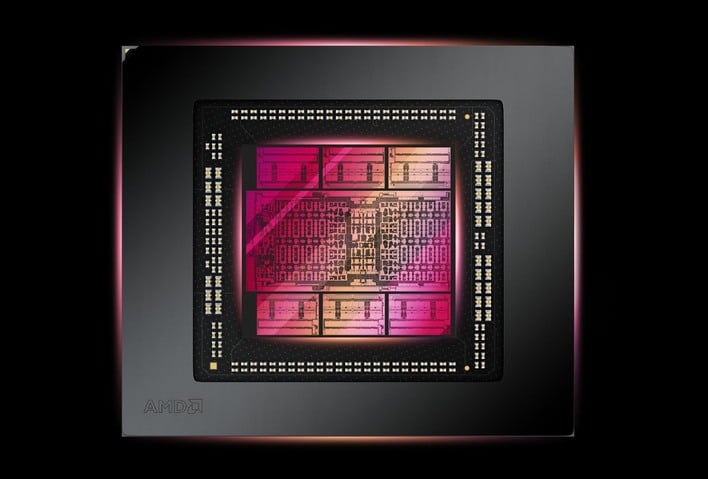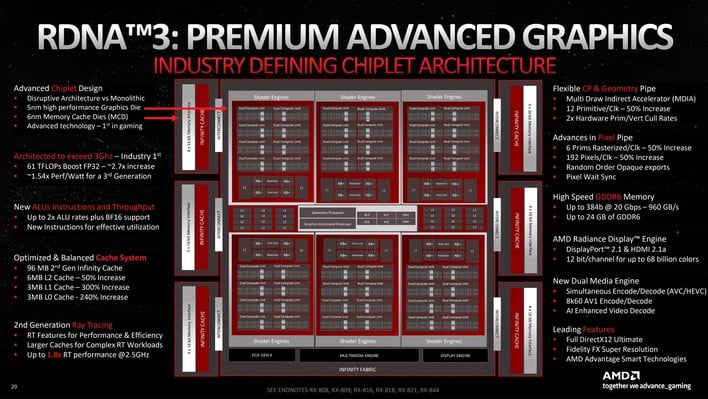AMD Promises Higher Performance Radeons With RDNA 4 In The Not So Distant Future

The commentary didn't come right out and say that "RDNA 4 will be [x]" or "have [x]", but rather, as statements about AMD's David Wang and Rick Bergman's ideas about how computer graphics will evolve. For example, Wang acknowledged that NVIDIA has placed a great emphasis on the use of AI. Wang says that AMD doesn't have the same strategy, and that AMD doesn't believe GPU AI accelerators are being used well in the consumer market.
It's a bit of a curious statement considering that RDNA 3 actually added AI inference acceleration to the architecture for the first time, but it makes sense in light of the fact that even an Arc Alchemist GPU can outperform a Radeon RX 7900 XTX in pure tensor operations. Considering that, it perhaps follows that AMD would would be dismissive about AI in the consumer market, but that's not exactly what Wang said.

Wang says that, rather than image processing, he'd like to see AI acceleration on graphics cards instead used to make games "more advanced and fun," and he gives the example of "the movement and behavior of enemy characters and NPCs," an area of game programming often referred to as "AI" despite its distant relation to the study of neural networks.
In response to a question about "new 3D graphics paradigms" that need standardization in the graphics industry, AMD remarked that the next big step for graphics actually has to do with "GPU self-contained drawing" that eliminates the CPU overhead from graphics tasks. We've already taken a step in that direction with newer DirectX 12 and Vulkan graphics APIs, but it sounds like AMD is interested in advancing that idea further.
AMD's only mention of the MDIA was a tiny note on this slide.
4Gamer points out that AMD's RDNA 3 includes in hardware a "Multi-Draw Indirect Accelerator" used for multi-draw indirect operations. This is a method of dispatching multiple instanced draw commands in such a way that they can be issued entirely on the GPU, saving quite a bit of overhead. Apparently, RDNA 3 can do this 2.3x faster than RDNA 2, and we might see further improvements along these lines in RDNA 4.
Likely the most interesting part of the interview, at least with respect to RDNA 4, is the statement toward the end where AMD's Rick Bergman says that the company "promises to evolve to RDNA 4 with even higher performance in the near future." It shouldn't be a surprise to anyone that the company expects its next-generation GPUs to be even faster than its extant products, but "in the near future" sounds like the company could be moving to RDNA 4 earlier than expected.


